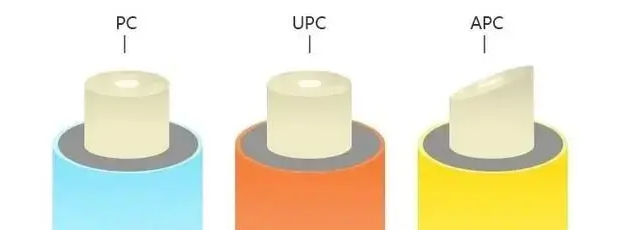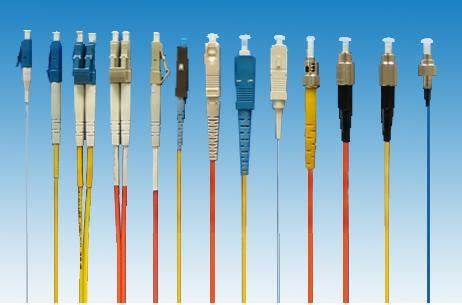Differences between the 3 Common End-face Types
Differences between the 3 Common End-face Types

- Why should fiber optic end–faces be polished?
With connectors mounted on one fiber end-face, return loss is unavoidable, which occurs due to reflections from the light source. Severe light loss can damage the laser light source and interrupt the transmitted signal. In order to allow better contact between the end faces of two optical fibers, the ferrule end faces of fiber optic patch cords are usually ground into different structures.
(1)PC means physical contact. Micro-spherical grinding and polishing, the surface of the core is ground into a slight sphere, the fiber core is located in the highest point of the bend, which can effectively reduce the air gap between the fiber optic components, so that the two fiber end faces to achieve physical contact.
(2)UPC means Ultra Physical Contact, ultra-physical end-face. UPC connector end-face is not completely flat, there is a slight curvature in order to achieve a more accurate docking. UPC is more optimized on the basis of PC end face polishing and surface finish, the end-face looks more dome-shaped.
 (3)APC means Angled Physical Contact, is beveled physical contact. The fiber end-face is usually ground to an 8° The 8°angled bevel makes the fiber end face tighter and reflects light through its bevel angle to the cladding instead of directly back to the light source, providing betterconnection performance.
(3)APC means Angled Physical Contact, is beveled physical contact. The fiber end-face is usually ground to an 8° The 8°angled bevel makes the fiber end face tighter and reflects light through its bevel angle to the cladding instead of directly back to the light source, providing betterconnection performance.

2、Insertion loss and return loss of different end-faces
Different end-face morphologies determine the quality of fiber transmission, mainly in insertion loss and return loss.
(1)Insertion Loss, Insertion Loss refers to the optical signal through the fiber optic patch cord, the output optical power relative to the input optical power in decibels.

Pin is the input optical power; Pout is the output power. Insertion loss is positive, the smaller the value the better. Typical insertion loss for PC, UPC, and APC connectors should be less than 0.3 dB. It is often easier to achieve low insertion loss in UPC/PC connectors due to the smaller air gap compared to APC connectors. Insertion loss can also be caused by dust particles between the connector end faces.
(2)return loss, also known as reflection loss, refers to the optical signal through the fiber optic jumper connection, backward reflected optical power relative to the incident optical power in decibels.

Pin is the input optical power; Pr is the backward reflected optical power. Return loss is usually expressed in negative dB, the higher the value parameter, the better.The end-face of APC connector is beveled and polished, so the return loss of APC connector is usually better than that of UPC connector.
Generally speaking, the return loss of fiber optic patch cord with PC polishing method is -40dB, the return loss of UPC is higher than that of PC, generally at -55dB, and the return loss of APC industry standard is -60dB. When using UPC connector, some reflected light will be emitted back to the light source, whereas the beveled end-face of APC connector will make part of the reflected light reflected to the cladding at a certain angle, thus reducing more reflected light, and thus reducing more reflected light. The beveled end of the APC connector will cause some of the reflected light to be reflected back to the cladding at an angle, which reduces the amount of reflected light returning to the light source, which is the main factor contributing to the difference in return loss.
3、Specific applications of the three end-face types
PC is the most common type of grinding for fiber optic connectors on fiber optic patch cords and is widely used in telecom carrier equipment.

UPC is typically used on Ethernet network equipment (e.g., ODF fiber distribution frames, media converters, and fiber optic switches), digital, cable TV, and telephone systems.
APC are generally used for optical RF applications in high wavelength ranges such as CATV, but also for optical passive applications such as PON network architectures or passive optical LANs.
Since the end-face of the APC is ground to an 8-degree angle, the APC cannot be connected to the UPC, which would result in degradation of connector performance. However, the fiber end faces of both PC and UPC are flat, and the difference is in the quality of the grinding, so the mixed connection of PC and UPC is not enough to form permanent physical damage to the connector. Also, APC connectors are usually green and PC/UPC connectors are blue.



